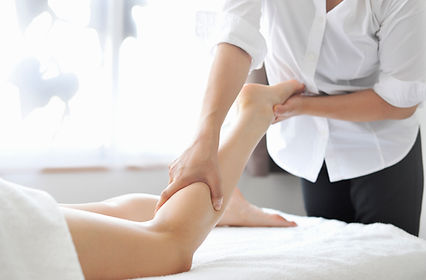Swedish Massage
What is Swedish Massage and who would benefit from it?
Swedish Massage is one of the most common types of massage. The goal of this therapeutic technique is to help relax your whole body. The style and pressure used can vary depending upon what you and your therapist are trying to achieve with your session.
This can be slow and gentle (Advanced Light Swedish) or a more vigorous approach. Swedish Massage is helpful for anyone wanting to relax or decompress. However, it is also used to address various aches, pains, and issues including but not limited to:
-
Sports Injuries
-
Stress
-
Sciatica
-
Postural Imbalance
-
Anxiety
-
Depression
-
Gastrointestinal Disorders
-
Irritable bowel syndrome
-
Water retention
-
Osteoarthritis
-
Headaches
-
Migraines
-
Fatigue and Low Energy Issues
-
Insomnia
-
Asthma
-
Digestive Disorders
-
Joint pain
-
Sprains or Stiffness
-
Lower Back Pain
-
Muscle Tension
-
Muscle Strain
-
Scoliosis
-
Skin Conditions

What would a session entail?
Swedish Massage involves a hands-on approach using a combination of five different techniques. They include: effleurage – a long gliding stroke; petrissage – the use of kneading and compression similar to kneading dough; friction strokes – uses a small circular or perpendicular motions with either the fingers, the palms of your hand, or a soft fist; vibration – a precise and tremulous motion that sinks into the tissue; and tapotement – which uses a drumming or patting motion with either the use of fingertips, cupped hands, a soft fist, or the ulnar side of the hand.
During this type of massage therapy, the client will be undressed and covered by a sheet or towel while lying comfortably faced down on a massage table with your head in a u-shaped head rest. The practitioner will perform the massage using lotion, and only uncover the portion of your body they are working on. Typically the practitioner will starts the Swedish Massage by working on your back, proceeding on to the back of each leg, continuing on to the arms, and finishes up with your neck and shoulders.


